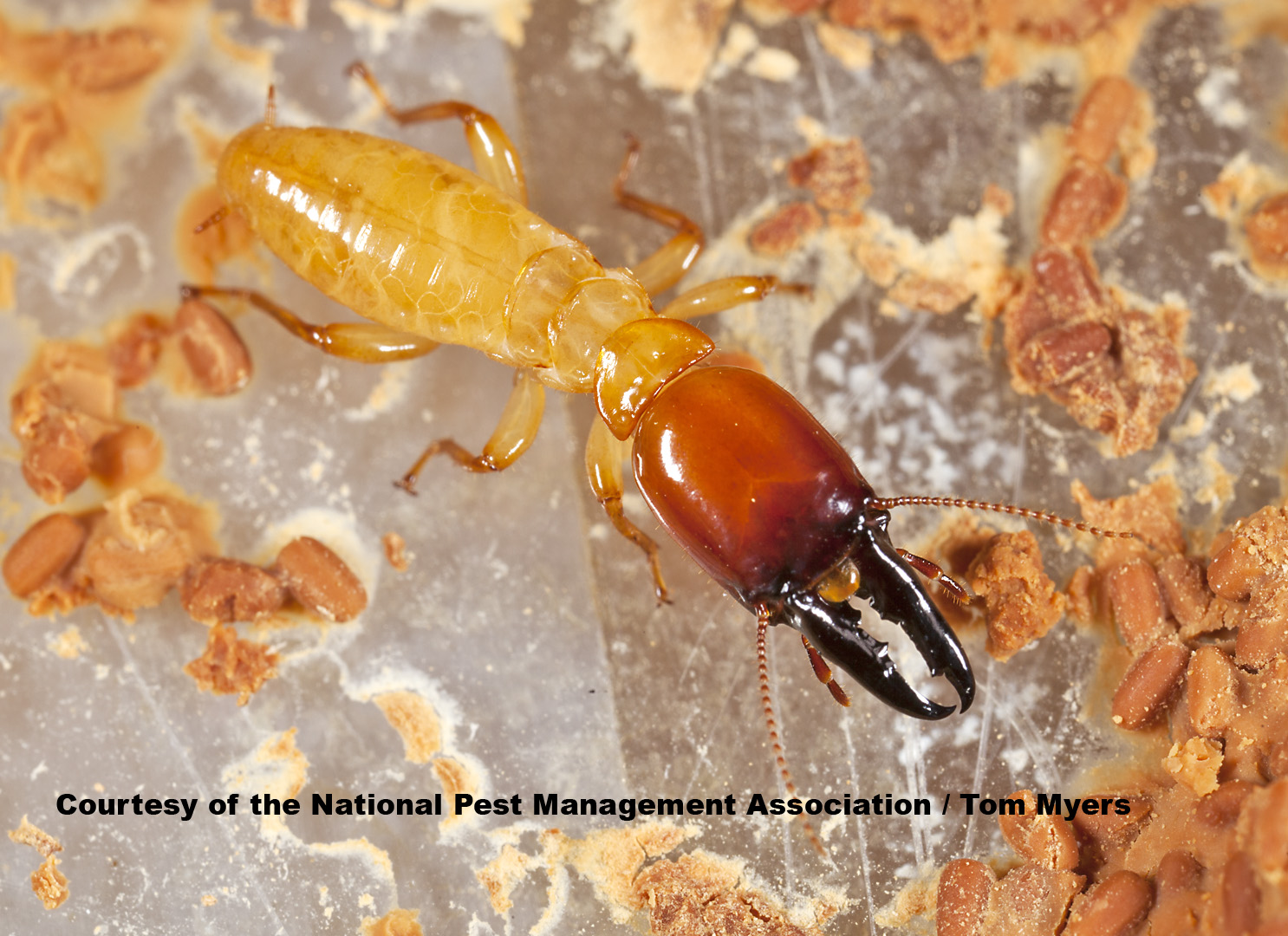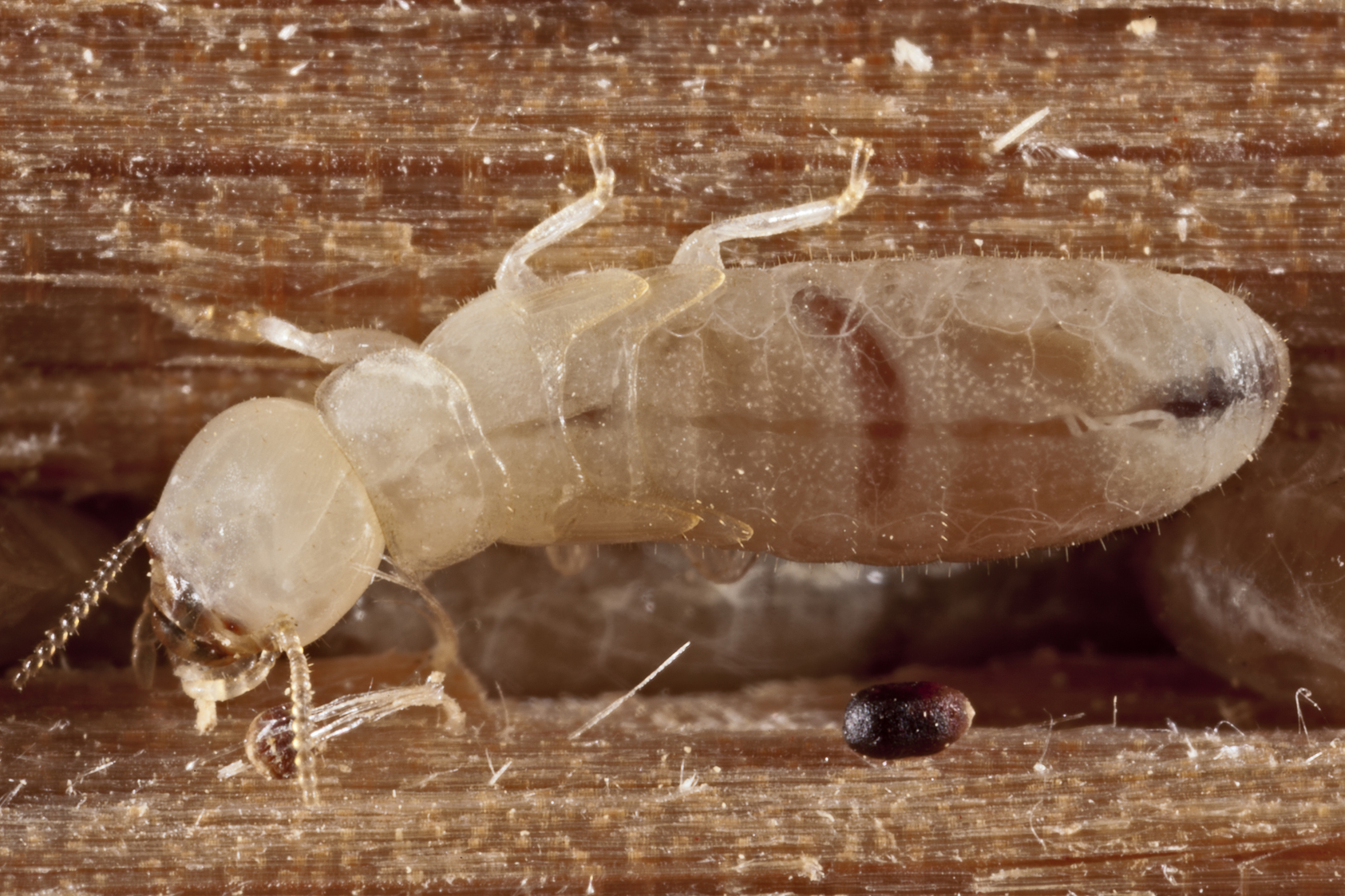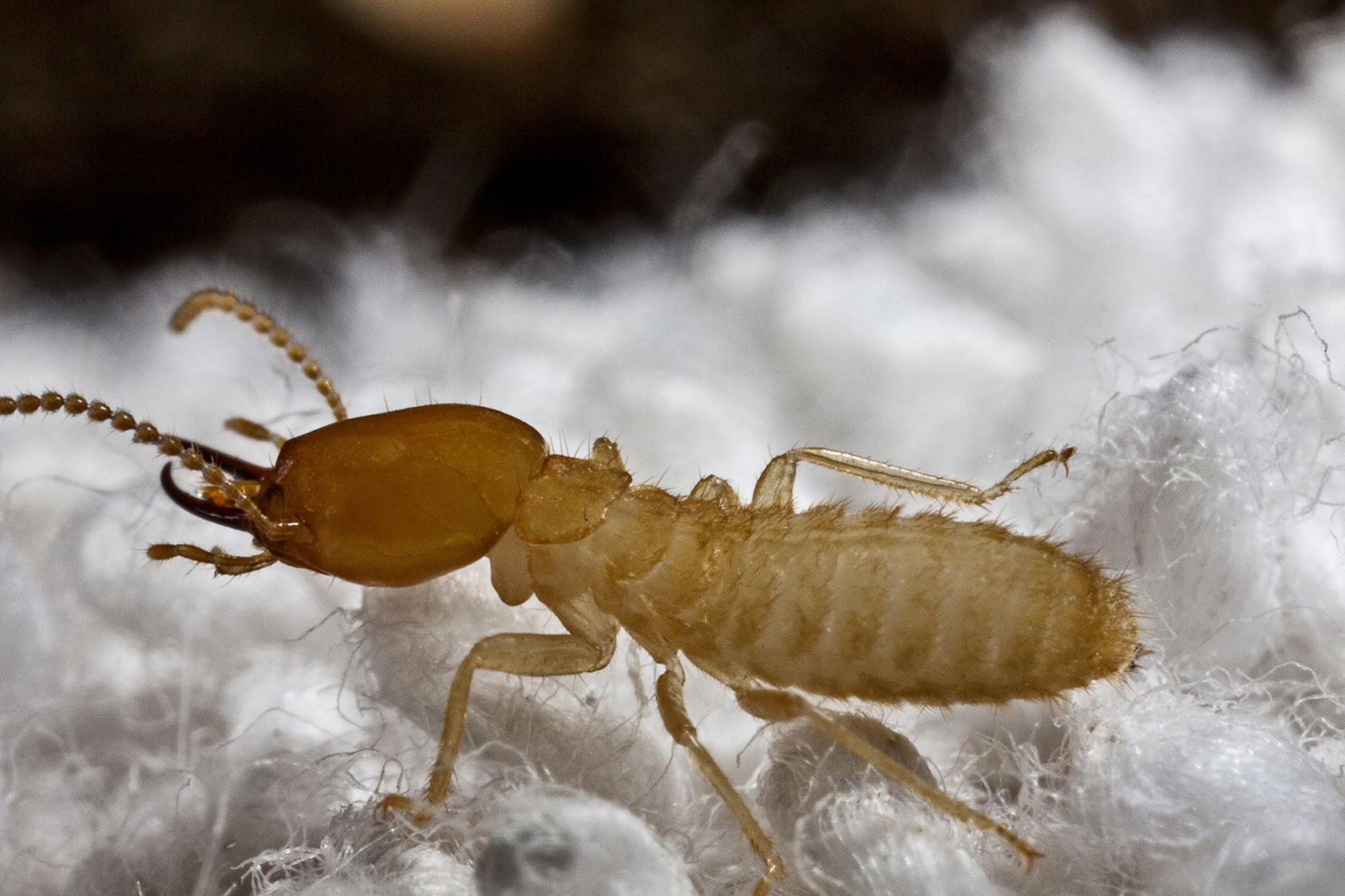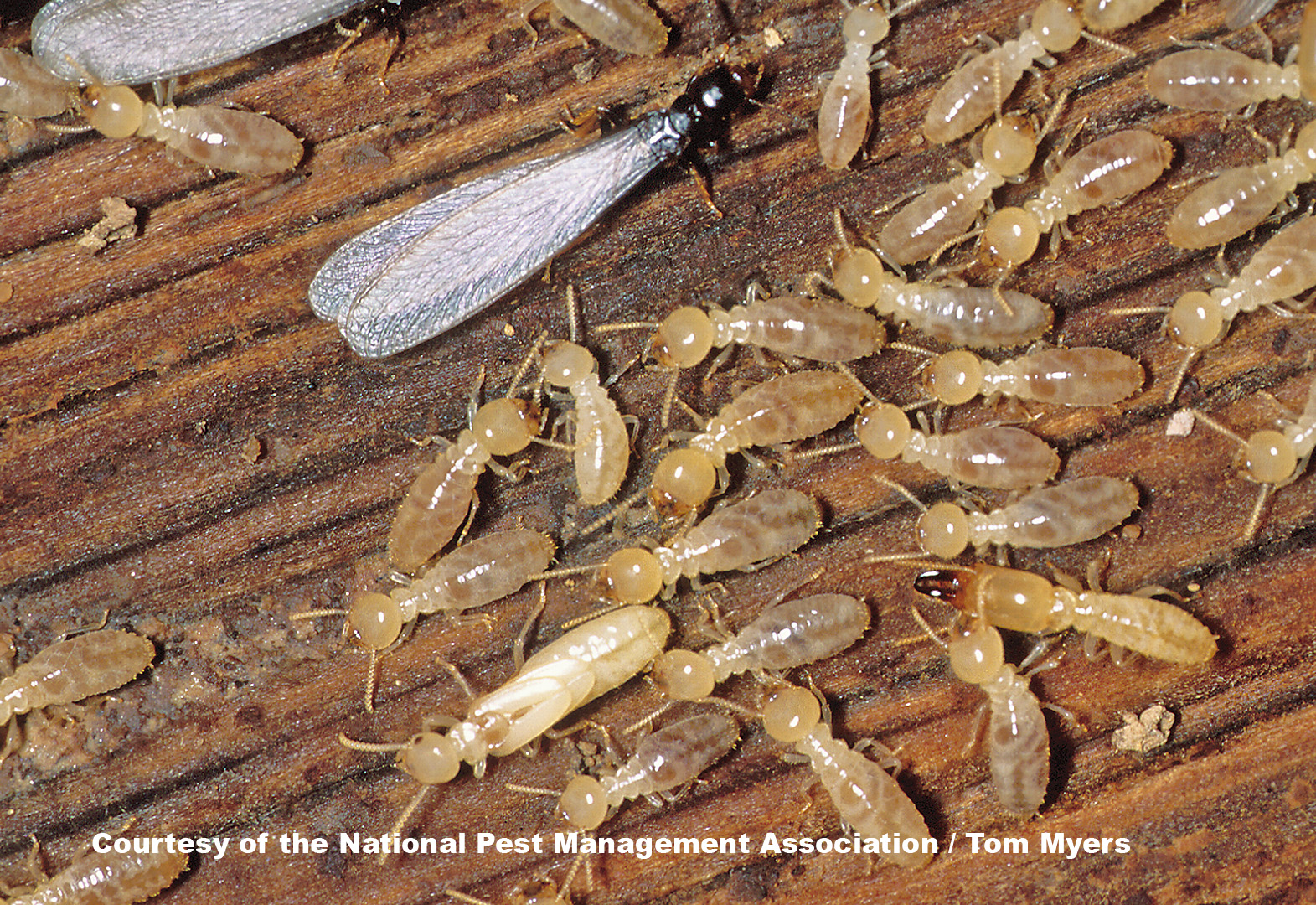Termite Facts for Kids
Did you know? Termites have been around since the time of the dinosaurs!
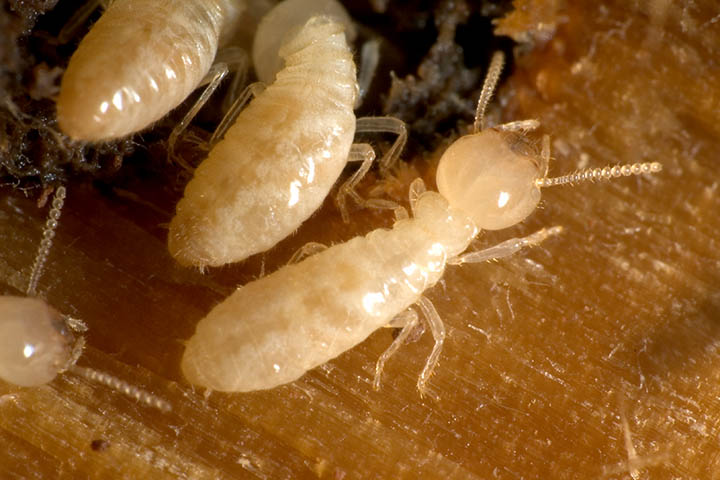
Explore Termite Facts for Kids
Termite Information for Kids
- Termites like to hang out with their friends. They are social insects and raise their families as a group.
- The total weight of all the termites in the world is more than the weight of all the humans in the world.
- Termite colonies eat non-stop, 24 hours a day, seven days a week!
- They are known as "silent destroyers" because of their ability to chew through wood, flooring and even wallpaper undetected.
- Each year, termites cause more than $5 billion in property damage.
- There are about 2,000 known termite species in the world.
- Termites have wings that they shed once they have found a good place to build a nest.
- Baby termites look like white, yellow, or clear eggs when they’re inside the nest. After the egg hatches, they look like mini termites.
- Termites are very unlikely to bite humans or pets. If you are bitten, there might be a small mark, but it will go away in a day or two.
- Termites are known for their wood-based eating habits, but you can find out what happens when we place household items like shoes, money, towels, and headphones in a tank of 100,000 termites over at “Will They Eat It?”
Parents and kids alike can find additional termite facts and information on termite control at the official NPMA website. Teachers can also get their hands on termite lesson plans for grades k-2 and grades 3-5.
Dampwood Termites
Dampwood termites are normally the biggest species of termites! With these types of termites, the colonies don’t have workers. Younger termites, called nymphs or "false workers" do all the work for the colony. This work includes taking care of the queen and king as well as feeding the older, solider termites.
- Size: 1/2" to 5/8"
- Shape: Long, narrow, oval
- Color: Brownish
- Legs: 6
- Wings: Yes
- Antenna: Yes
- Common Name: Dampwood termite
- Kingdom: Animalia
- Phylum: Arthropoda
- Class: Insecta
- Order: Isoptera
- Family: Hodotermitidae
- Species: Varies
What Do Dampwood Termites Eat?:
Dampwood termites like to feed on very wet, squishy wood.
Where Do Dampwood Termites Live?:
Because they need lots of moisture, dampwood termites usually live near damp, dying wood or in houses with leaking plumbing that keeps the wood wet.
How Can Dampwood Termites Impact Me?:
Dampwood termites do not carry disease and it’s not likely you personally will interact with them. If dampwood termites impact you, it’s normally because they have destroyed wood in your home or another builder. They don’t usually bother family buildings because there is not enough water in the wood.
How Can I Avoid Dampwood Termites?:
- To avoid dampwood termites, make sure water drains away from your house.
- Replace any damp or damaged wood on the outside of your home.
- If you see signs of what you think could be a dampwood termite colony, make sure you tell an adult who can call a pest control professional. Otherwise, they can cause serious damage to your home.
Find more dampwood termite facts for kids to share with your classroom at the official NPMA website.
Drywood Termites
Drywood termites form colonies of up to 2,500 members. Like dampwood termites, drywood termite colonies don’t have workers. Younger termites, called “false workers,” do all the work for the colony.
Unlike other termites, Drywood termites do not build their colonies underground. They like to live inside the wood that they eat. You could call that easy access to the kitchen.
You can keep reading for more kid-friendly drywood termite facts, including their diet and habitat.
- Size: 3/8"
- Shape: Long, narrow, oval
- Color: Light brown
- Legs: 6
- Wings: Yes
- Antenna: Yes
- Common Name: Drywood termite
- Kingdom: Animalia
- Phylum: Arthropoda
- Class: Insecta
- Order: Isoptera
- Family: Kalotermitidae
- Species: Varies
What Do Drywood Termites Eat?:
Drywood termites eat wood, wallpaper, plastics and fabric made from plants.
Where Do Drywood Termites Live?:
Drywood termite colonies live on the West Coast as well as in parts of Texas, Florida, the Carolinas, and Hawaii.
They live up to their name by usually being found in dry wood. They do not need moisture or contact with the soil to eat their way through wood. This is what makes them particularly dangerous to buildings.
Can Drywood Termites Harm Humans?:
Drywood termites won’t hurt you directly, but they can hurt your house. They can build nests and dig tunnels in buildings. These tunnels cause major damage because the wooden support beams can become weak and make the building lean or fall. It is very important if you see termites or signs of termites like piles of wood shavings to notify an adult immediately. Have that adult call a pest control professional.
How Can I Avoid Drywood Termites?:
- Make sure firewood and scrap wood is stored away from your house.
- Seal all cracks and crevices around the outside of your home.
Teachers can find more drywood termite information for kids, and parents can find pest control tips, at the official NPMA website.
Formosan Termites
These termites have a nickname: they are called “super termites” because of how much they eat. Formosan termite colonies can be up to 300 feet long and there can be tens of thousands of termites in a single colony. That’s a lot of tiny termites!
Formosan Termites are often mistaken for flying ants. You can tell them apart by looking closely at their waist. Formosan termites are a thick waist and flying ants have a thin waist. You can also look at their antennae. Termites have straight ones whereas ant antennae are bent.
Formosan termite colonies are divided into three groups: workers, soldiers and reproductives, also known as the mommies and daddies. They are the largest and most destructive kind of termite.
- Size: 1/2"
- Shape: Long, narrow, oval
- Color: Yellowish brown
- Legs: 6
- Wings: Yes
- Antenna: Yes
- Common Name: Formosan termite
- Kingdom: Animalia
- Phylum: Arthropoda
- Class: Insecta
- Order: Isoptera
- Family: Rhinotermitidae
- Species: Varies
What Do Formosan Termites Eat?:
Formosan termites eat wood and fabric made from plants. When they eat dead trees, these termites help the environment and make space for new plant life.
Where Do Formosan Termites Live?:
Formosans termites live in huge underground colonies and build mud nests inside the walls of buildings. They can also live in boats and buildings.
How Do Formosan Termites Impact People?:
Luckily, Formosan termites are very unlikely to hurt humans, but your home is another story! Formosan termites eat a lot of wood, and if they’re in your house, eating the wood of your house, they can cause thousands of dollars of damage.
If you see Formosan termites or signs of their droppings or of wood shavings, immediately point it out to an adult. The adult should call a pest control professional to remove the termites and assess the level of damage.
How Do I Spot Formosan Termites?:
To check your home for signs of termites, look for:
- Bubbling paints
- Mud tubes
- Wood that sounds hollow when tapped
Are you a school teacher looking for more materials to share with your kids? Find additional facts and information on Formosan termites at the official NPMA website.
Also watch Formosan termites face off with red imported fire ants in episode 3 of Bug Battles!
Subterranean Termites
Subterranean termite colonies can have up to 2 million members! Their colonies are divided into three groups: workers, soldiers and reproductives, which are the ones who make baby Subterranean termites. Did you know that the king and queen termite are considered reproductive subterranean termites? Their job is to help the colony grow.
The queen is the largest termite in these colonies, and worker and solider termites do not have wings!
- Size: 1/8" to 1"
- Shape: Long, narrow, oval
- Color: Creamy brown
- Legs: 6
- Wings: Yes
- Antenna: Yes
- Common Name: Subterranean termite
- Kingdom: Animalia
- Phylum: Arthropoda
- Class: Insecta
- Order: Isoptera
- Family: Rhinotermitidae
- Species: Varies
What Do Subterranean Termites Eat?:
Subterranean termites eat wood, wallpaper, plastics and fabric made from plants.
Where Do Subterranean Termites Live?:
Subterranean termites need contact with the soil to survive. They live in underground colonies or in wet areas aboveground. Their tunnels are called “mud tubes.” They build tunnels to reach food and, every spring, groups of reproductive termites fly off to start new colonies. These termites love humidity, so if you have a problem with them in your home you may want to buy a dehumidifier.
Are Subterranean Termites Harmful to Humans?:
Subterranean termites are the most destructive kind of termite. They can eat a lot of wood and they can cause a lot of expensive damage to a house! They can destroy building foundations, wooden support beams, plastic plumbing pipes, sub-flooring, insulation … even swimming pool liners and filtration systems! Termites can also injure or destroy living trees and shrubs.
So, while subterranean termites are unlikely to physically harm you, they can cause a lot of harm to your family by seriously damaging your house. If you think you might have subterranean termites, be sure to have an adult contact a pest control professional to figure out the best way to handle the situation.
How Do I Avoid Subterranean Termites?:
- Make sure water drains away from your house.
- Don’t let water build up around your home's foundation. Termites like that!
- Replace any damp or damaged wood on the outside of your home.
- Never leave wood scraps in the yard for them to snack on.
Can’t find what you’re looking for? Find more subterranean termite facts for kids and adults at the official NPMA website.
Wondering what termites will eat? Check out our Will They Eat It series where we release termites onto a dictionary, money, a shoe, headphones, and towels to see what they will eat.


